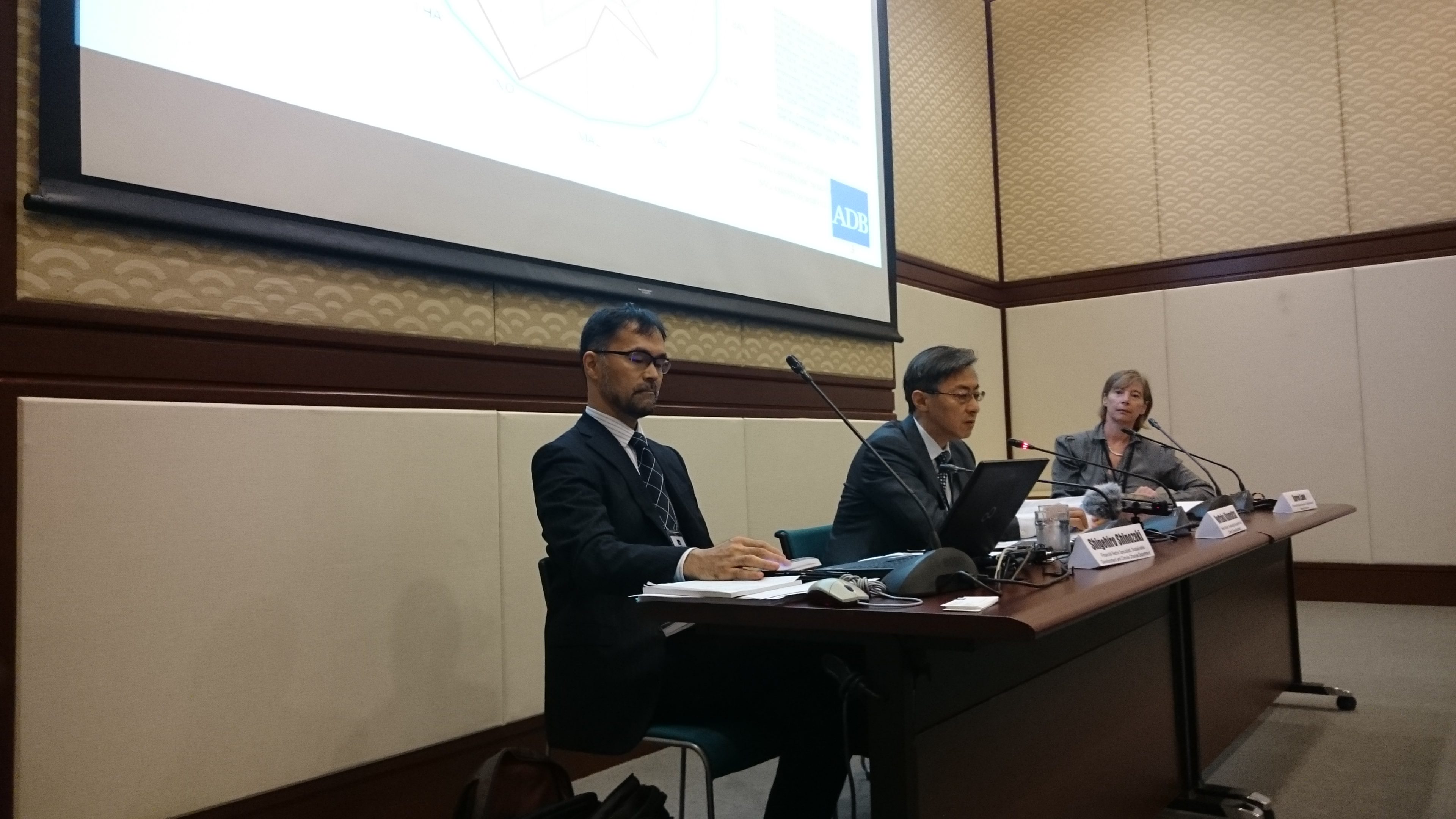SUMMARY
This is AI generated summarization, which may have errors. For context, always refer to the full article.

MANILA, Philippines – An Asian Development Bank (ADB) expert said Wednesday, September 2 that the Asian region and the whole world is faced with a slowdown in the global economy, thus, a new growth model is needed in which small to medium enterprises’ (SMEs) productivity will play a very important role.
SMEs make up an average of 96% of all registered firms and employ 62% of the labor force of developing Asia, however they contribute only 42% of economic output, said ADB senior adviser for sustainable development Noritaka Akamatsu, during the launch of the “Asia SME Finance Monitor.”
The report shows how countries are working toward creating efficient financing infrastructure to support SMEs development, which leads to higher productivity of SMEs. Which in effect enables them to contribute greater to the country’s GDP (gross domestic product),” Akamatsu explained.
The report stated that in the Philippines, SMEs account for 99.7% of total registered business with the Security and Exchange Commission (SEC). But only 3 firms classified as SMEs are listed among the 263 listed firms on the stock exchange.
Limited access to bank credit is a persistent problem in Asia and Pacific and lending to SMEs has declined over the course of the global financial crises of 2008 and 2014; a period wherein they received only 18.7% of total bank loans, the report stated.
Several countries have made progress tackling this. Papua New Guinea and the Solomon Islands have made it easier for SMEs to borrow using movable assets as collateral while Kazakhstan and Mongolia have encouraged loan refinancing schemes.
The Philippines, along with Indonesia, have introduced mandatory bank lending quotas to SMEs, the report stated. (READ: BSP approves revisions on MSMEs reports from banks)
Non-bank finance industry
The ADB advocates a holistic approach to increase SME’s access to financing, focusing primarily on improving access to bank loans but also looking at other less traditional ways.
In developing Asia, the financial sector is dominated by banks so our support and the countries support naturally focuses first on access to bank credit but at the same time many countries are exploring other avenues of financing, Akamatsu shared.
These include equity based financing through crowd funding and SME capital markets and leasing programs for capital equipment SMEs need such as factories and machines, he explained.
Its important that governments in the region, Akamatsu said, are aware of these new financing methods and explore them in an effort to provide comprehensive support.

Improving Philippine SME financing
One of the key financing issues Philippine SMEs face is a lack of reliable credit information database, explained Shigehiro Shinozaki, ADB financial sector specialist and leader of the Asian SME Finance Monitor team.
He noted that the country has established the Credit Information Corporation (CIC) back in 2008 but “in substance has just started operating recently,” he said.
Shinozaki also pointed out the microfinance data sharing system (MiDaS) established in 2012 by 7 of the largest microfinance institutions in the country.
“These kinds of credit data infrastructure are very powerful and very important to stimulate bank lending to SMEs and improving and making widespread use of them will help reduce the supply gap in SME finance,” he said.
Another way to improve financing is for the government to consider alternative financing methods to provide growth capital to SMEs.
Two suggestion he gave were to provide more equity financing and actively support the development of a venture capital industry in the country.
Making it easier to for SMEs to list in the stock exchange or creating an over-the-counter market for unlisted SMEs, similar to what Malaysia has done, would encourage more venture capital firms to invest in SME startups as it provides them with an “exit” or avenue to increase their initial investment, he explained. (READ: Tech startups gain prominence; PSE takes notice)
Finally, Shinozaki pointed out that a lot of SMEs could be clustered together to boost their credit ratings and make it appealing for banks to give them loans as banks hesitate to provide loans to individual SMEs because of high transactions costs, he said.
The Philippines shows a lot of potential with its SME networks, he pointed out: “We see many potentially good clusters and production networks in electronics, automotive parts, and, in the rural areas; many different agribusinesses, food processing, and handicraft production.” – Rappler.com
Coin stack image from Shutterstock
Add a comment
How does this make you feel?
There are no comments yet. Add your comment to start the conversation.